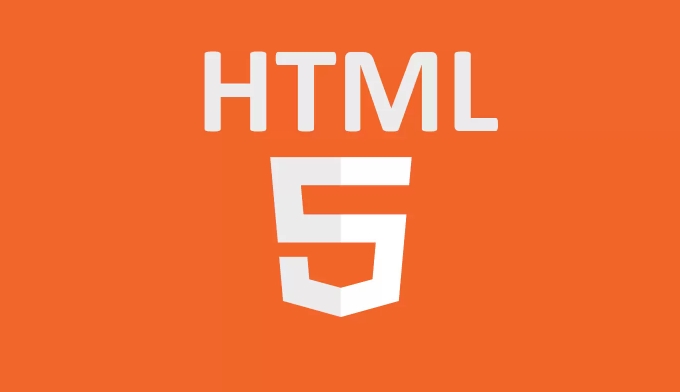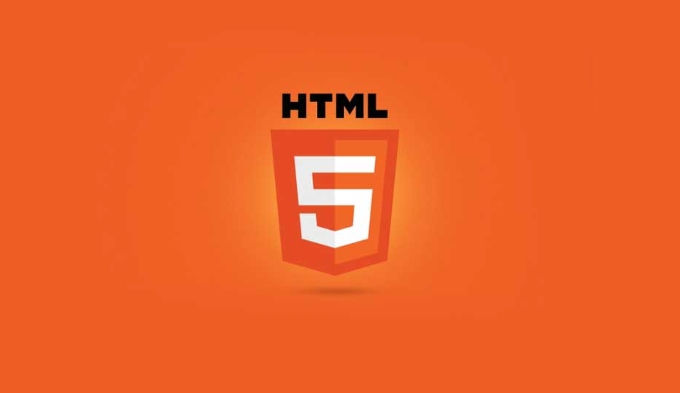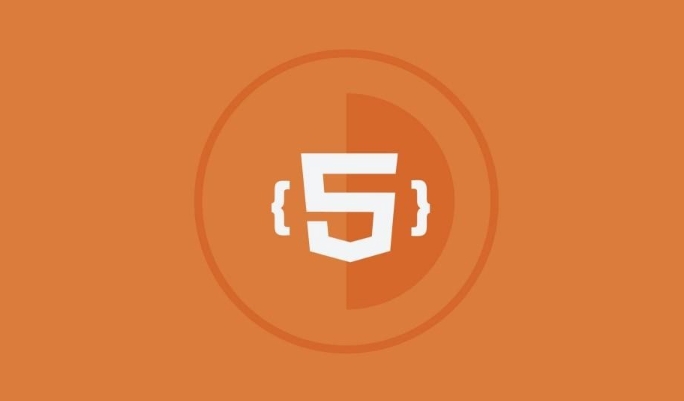Headers and footers are crucial in web page structure. 1. HTML5 uses <header> and <footer> tags to define these areas to improve semantics and optimize SEO and accessibility; 2. <header> is often used at the top of a page or block, including title, navigation, logo, etc. It is recommended that a page only uses one global header and can be fixed through CSS; 3. <footer> defines the bottom of a page or block, usually containing copyright information, secondary navigation, etc., and should also keep the semantics clear and pay attention to auxiliary functions; 4. Fixed positioning and responsive design are recommended in the layout, and extracted into component reuse in combination with the front-end framework.

The header and footer of a page are very critical parts of the web structure, and they usually contain navigation, copyright information, links, etc. In HTML5, we can use <header></header> and <footer></footer> tags to define these areas more clearly, improve semantic structure, and facilitate SEO and accessibility optimization.

Use <header></header> to define header content
The <header></header> tag is generally used at the top of the page or at the head of a certain block, and is often used to wrap content such as website titles, navigation bars, logos or search boxes.

Common practices:
- A website usually has a global
<header></header>placed at the top of the page - Each article or block can also have its own
<header></header>, such as the title part of a blog post - You can nest
<nav></nav>tags to place navigation menus
For example:

<header>
<h1>My website</h1>
<nav>
<ul>
<li><a href="/">Home</a></li>
<li><a href="/about">About</a></li>
<li><a href="/contact">Contact</a></li>
</ul>
</nav>
</header>suggestion:
- Avoid using multiple global
<header>in a single page unless you have multiple independent main blocks - If using CSS layout, you can fix
<header>on the top to achieve the "fixed header" effect
Define footer content using <footer>
Similar to <header> , <footer> is used to define the bottom area of ??a page or block, usually containing copyright information, contact information, secondary navigation, social media links, etc.
Common Structures:
- Put a global
<footer>at the bottom of the page - Each article or module can also have its own
<footer>, such as displaying the release time, author, etc.
The sample code is as follows:
<footer>
<p>© 2025 My Website. All rights reserved.</p>
<nav>
<ul>
<li><a href="/privacy">Privacy Policy</a></li>
<li><a href="/terms">Terms of Use</a></li>
</ul>
</nav>
</footer>Notes:
-
<footer></footer>is usually at the end of the page, but can be placed in other locations via CSS (such as the side) - Don't miss semantic tags related to auxiliary functions, such as
<nav></nav>is also important in the footer.
Header and footer layout tips and best practices
To make the header and footer look neat and practical, some basic CSS tips can be combined:
- Fixed positioning : Use
position: fixedto make the header always visible, suitable for long pages - Responsive design : simplify navigation on small screens, use hamburger menus or other folding methods
- Semantic clarity : Avoid replacing to maintain the semantic advantages of
<header></header>- SEO friendly : Search engines will judge the page structure based on the contents of
<header></header>and<footer></footer>and arrange keywords reasonablyIf you are using front-end frameworks (such as React, Vue), you can extract
<header></header>and<footer></footer>as components, reuse multiple pages, and reduce duplicate code.
Basically that's it. HTML5's
<header></header>and<footer></footer>look simple, but it has a great effect in building a clear structure and a good user experience and is worth taking seriously. - SEO friendly : Search engines will judge the page structure based on the contents of
The above is the detailed content of Implementing Page Headers and Footers with HTML5 Tags. For more information, please follow other related articles on the PHP Chinese website!

Hot AI Tools

Undress AI Tool
Undress images for free

Undresser.AI Undress
AI-powered app for creating realistic nude photos

AI Clothes Remover
Online AI tool for removing clothes from photos.

Clothoff.io
AI clothes remover

Video Face Swap
Swap faces in any video effortlessly with our completely free AI face swap tool!

Hot Article

Hot Tools

Notepad++7.3.1
Easy-to-use and free code editor

SublimeText3 Chinese version
Chinese version, very easy to use

Zend Studio 13.0.1
Powerful PHP integrated development environment

Dreamweaver CS6
Visual web development tools

SublimeText3 Mac version
God-level code editing software (SublimeText3)

Hot Topics
 Audio and Video: HTML5 VS Youtube Embedding
Jun 19, 2025 am 12:51 AM
Audio and Video: HTML5 VS Youtube Embedding
Jun 19, 2025 am 12:51 AM
HTML5isbetterforcontrolandcustomization,whileYouTubeisbetterforeaseandperformance.1)HTML5allowsfortailoreduserexperiencesbutrequiresmanagingcodecsandcompatibility.2)YouTubeofferssimpleembeddingwithoptimizedperformancebutlimitscontroloverappearanceand
 What is the purpose of the input type='range'?
Jun 23, 2025 am 12:17 AM
What is the purpose of the input type='range'?
Jun 23, 2025 am 12:17 AM
inputtype="range" is used to create a slider control, allowing the user to select a value from a predefined range. 1. It is mainly suitable for scenes where values ??need to be selected intuitively, such as adjusting volume, brightness or scoring systems; 2. The basic structure includes min, max and step attributes, which set the minimum value, maximum value and step size respectively; 3. This value can be obtained and used in real time through JavaScript to improve the interactive experience; 4. It is recommended to display the current value and pay attention to accessibility and browser compatibility issues when using it.
 Adding drag and drop functionality using the HTML5 Drag and Drop API.
Jul 05, 2025 am 02:43 AM
Adding drag and drop functionality using the HTML5 Drag and Drop API.
Jul 05, 2025 am 02:43 AM
The way to add drag and drop functionality to a web page is to use HTML5's DragandDrop API, which is natively supported without additional libraries. The specific steps are as follows: 1. Set the element draggable="true" to enable drag; 2. Listen to dragstart, dragover, drop and dragend events; 3. Set data in dragstart, block default behavior in dragover, and handle logic in drop. In addition, element movement can be achieved through appendChild and file upload can be achieved through e.dataTransfer.files. Note: preventDefault must be called
 How can you animate an SVG with CSS?
Jun 30, 2025 am 02:06 AM
How can you animate an SVG with CSS?
Jun 30, 2025 am 02:06 AM
AnimatingSVGwithCSSispossibleusingkeyframesforbasicanimationsandtransitionsforinteractiveeffects.1.Use@keyframestodefineanimationstagesforpropertieslikescale,opacity,andcolor.2.ApplytheanimationtoSVGelementssuchas,,orviaCSSclasses.3.Forhoverorstate-b
 HTML audio and video: Examples
Jun 19, 2025 am 12:54 AM
HTML audio and video: Examples
Jun 19, 2025 am 12:54 AM
Audio and video elements in HTML can improve the dynamics and user experience of web pages. 1. Embed audio files using elements and realize automatic and loop playback of background music through autoplay and loop properties. 2. Use elements to embed video files, set width and height and controls properties, and provide multiple formats to ensure browser compatibility.
 What is WebRTC and what are its main use cases?
Jun 24, 2025 am 12:47 AM
What is WebRTC and what are its main use cases?
Jun 24, 2025 am 12:47 AM
WebRTC is a free, open source technology that supports real-time communication between browsers and devices. It realizes audio and video capture, encoding and point-to-point transmission through built-in API, without plug-ins. Its working principle includes: 1. The browser captures audio and video input; 2. The data is encoded and transmitted directly to another browser through a security protocol; 3. The signaling server assists in the initial connection but does not participate in media transmission; 4. The connection is established to achieve low-latency direct communication. The main application scenarios are: 1. Video conferencing (such as GoogleMeet, Jitsi); 2. Customer service voice/video chat; 3. Online games and collaborative applications; 4. IoT and real-time monitoring. Its advantages are cross-platform compatibility, no download required, default encryption and low latency, suitable for point-to-point communication
 How to create animations on a canvas using requestAnimationFrame()?
Jun 22, 2025 am 12:52 AM
How to create animations on a canvas using requestAnimationFrame()?
Jun 22, 2025 am 12:52 AM
The key to using requestAnimationFrame() to achieve smooth animation on HTMLCanvas is to understand its operating mechanism and cooperate with Canvas' drawing process. 1. requestAnimationFrame() is an API designed for animation by the browser. It can be synchronized with the screen refresh rate, avoid lag or tear, and is more efficient than setTimeout or setInterval; 2. The animation infrastructure includes preparing canvas elements, obtaining context, and defining the main loop function animate(), where the canvas is cleared and the next frame is requested for continuous redrawing; 3. To achieve dynamic effects, state variables, such as the coordinates of small balls, are updated in each frame, thereby forming
 How to check if a browser can play a specific video format?
Jun 28, 2025 am 02:06 AM
How to check if a browser can play a specific video format?
Jun 28, 2025 am 02:06 AM
To confirm whether the browser can play a specific video format, you can follow the following steps: 1. Check the browser's official documents or CanIuse website to understand the supported formats, such as Chrome supports MP4, WebM, etc., Safari mainly supports MP4; 2. Use HTML5 tag local test to load the video file to see if it can play normally; 3. Upload files with online tools such as VideoJSTechInsights or BrowserStackLive for cross-platform detection. When testing, you need to pay attention to the impact of the encoded version, and you cannot rely solely on the file suffix name to judge compatibility.






